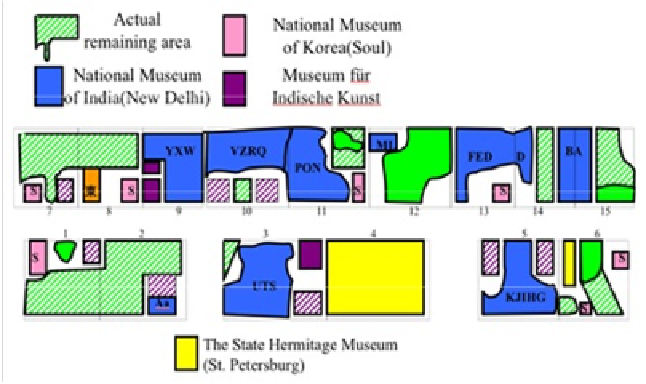Information Technology Reference
In-Depth Information
4.2 Analysis of The Wall Painting
The groundwork and pigments of the Bezeklik wall painting are given in Table. 3.
Using i1 (made by Gretag Macbeth), we measured the spectrum characteristic of the
groundwork and pigments for gypsum, lime, vermilion, yellow ocher, azurite,
malachite, and the carbon obtained by marketing now. The color tone changes by
roughness of pigments. If pigments fine the color brightness grew stronger.
Table 3.
The groundwork and pigments of the Bezeklik wall painting [3]
Groundwork
Red
yellow
blue
green
black
Yellow
ocher
gypsumlime
vermilionbengara
azurite
malachite
carbon
4.3 Reconstruction of The Wall Painting
For reconstruction of the wall painting, we consider a positional matching for
fragments of the wall painting (drawing, photographic image in the cave and at
museums) which are exist. (Fig.9.) Since the wall painting of the cave No. 4 is very
similar to one of the cave No. 9, characters in wall painting are also similar. Although
the wall painting of the cave No. 9 do not exist now, the facsimile, i.e. drawing, of it
is exist. Using digital high vision broad casting, we consider a zoom of an arbitrary
position on the reconstructed wall painting, thus a resolution is 7,000 x 7,000 pixels.
A digital reconstruction procedure of the cave No. 4 is as follows.
Fig. 9.
Wall paintings of No.4 were divided by foreign expeditions











